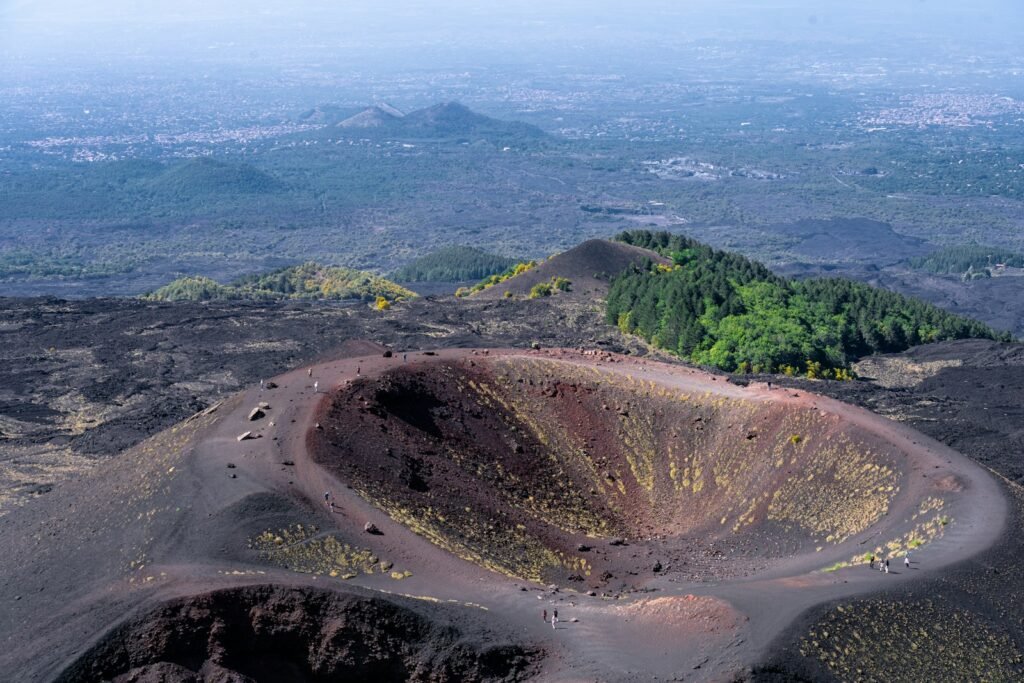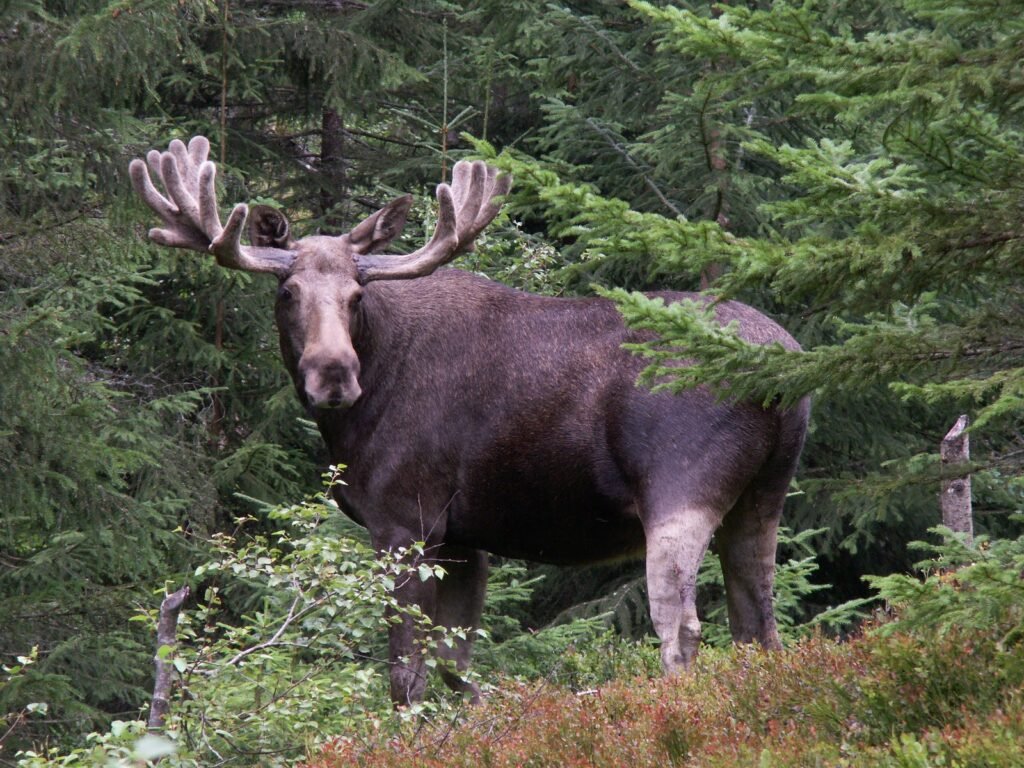Morning fog lifts like a curtain, and a ring of emerald appears where you expect only ash and rock. Inside an extinct volcano, a compact forest thrives along the inner rim, tucked from the worst winds yet close enough to the sky to drink the clouds. It looks improbable, almost theatrical, but its survival isn’t a trick – it’s the result of physics, time, and a quiet biological hustle. The mystery is simple to state and harder to answer: how does a forest prosper on the lip of a crater where soils are young, rain is fickle, and temperatures swing wildly? What researchers are piecing together is a story of microclimates, patient colonizers, and a living archive that may hold lessons for our warming world.
The Hidden Clues

Stand on the rim and the first surprise is sound: the hush of needles, the faint rasp of lichens, the tiny wingbeats of insects working the understory. This calm is deceptive; the rim is a borderland where weather collides, temperatures flip, and life bargains for every advantage. The inner walls shelter saplings from the harshest gusts, while the ridge captures fog that condenses into steady droplets – a quiet water subsidy.
Look closer and clues stack up like pages in a field notebook. Dark, sponge-like soils cradle roots despite their volcanic youth, and leaf litter forms small, insulating quilts over ash. Subtle plant mosaics trace sun angles and wind shadows, turning the rim into a map of microhabitats you can read with your feet.
From Ancient Tools to Modern Science

Early volcanic explorers leaned on boots, compasses, and patience, sketching plant bands as they climbed. Today, researchers sweep the rim with drones mounted with multispectral cameras and, when permitted, laser-based mapping to spot canopy gaps and hidden nurseries beneath taller crowns.
Back in the lab, soil cores reveal how glassy ash weathers into mineral-rich, water-holding earth, while environmental DNA pulled from those cores flags elusive mosses, fungi, and small invertebrates. The result is a layered picture: a young landscape that behaves like an old one because life has been busy engineering its own stability from the bottom up.
Life on the Edge: Microclimate Mechanics

The crater’s shape helps bend climate to the forest’s favor. As air chills at night, it drains into the bowl, creating brief inversions that limit frost damage near the rim and keep moisture lingering at dawn. By day, onshore winds rise, cool, and condense on needles and leaves – tiny dripping factories that feed the soil even when the weather forecast says drought.
Volcanic soils, rich in amorphous clays, act like natural reservoirs, hugging water and nutrients that might otherwise run off. Add a mantle of leaf litter and coarse woody debris, and the ground becomes a slow-release sponge. It’s less a single trick than a stack of small advantages that, together, push the balance toward growth rather than loss.
Who Lives Here: Architects of a Mini-Forest

Pioneer lichens and mosses arrive first, roughing up bare rock and creating the thinnest films of organic matter. Low shrubs and hardy grasses follow, their roots teasing cracks open and inviting in microbes that trade nutrients for sugars. When nitrogen-fixing partners establish – think certain shrubs and bacteria – the soil’s meager pantry doubles, tipping the door open for ambitious saplings.
Pollinators and seed carriers round out the cast: beetles and moths working nocturnal shifts, birds ferrying seeds from lower slopes, and wind itself sweeping in light, winged travelers. Over time, canopies knit together and the temperature steadies beneath, shaping a refuge that is cooler, damper, and more predictable than the bare rim a few feet away.
Global Perspectives

Crater-rim forests pop up in different forms around the world, yet they share a family resemblance. In tropical belts, moisture-heavy trade winds fatten the canopy, while in temperate zones, the forest skews shorter, tougher, and more evergreen. High-latitude rims can host compact, bonsai-like stands that ride out gales with flexible stems rather than brute strength.
Despite the variety, their rules align: capture fog, bank water, diversify niches, and stabilize soils. That convergence matters because it turns a single crater into a case study with worldwide echoes, a field lesson you can carry from one volcano to the next without losing the plot. The rim becomes less an oddity and more a blueprint for resilience.
Why It Matters

This rim-bound forest is a living demonstration that small-scale refuges can buffer climate stress, even when the broader landscape swings between extremes. Traditional conservation often targets large, contiguous areas first; crater systems remind us that finely tuned microhabitats can punch above their weight. In a warming world where cloud bases climb and droughts lengthen, places that harvest fog and stash water could keep species alive long enough for broader recovery.
There’s also a scientific windfall. These forests let researchers test ideas about island biogeography, nutrient cycling, and succession in fast-forward, thanks to the rapid soil-building and turnover on volcanic ground. For nearby communities, they stabilize slopes, reduce erosion into streams, and anchor ecotourism that depends on intact, remarkable places rather than extractive use.
The Future Landscape

The same features that make the rim resilient also make it vulnerable if they shift. Warmer temperatures can push cloud layers higher and shorten the daily fog drip, while erratic storms may strip leaf litter before it can buffer soil. Invasive insects or pathogens, once entrenched, find the tight-knit canopy a convenient highway, and prolonged drought tests even water-smart volcanic soils.
Emerging tools offer a counterweight. High-resolution thermal imaging can track moisture stress tree by tree, eDNA can flag new arrivals before they spread, and acoustic sensors can monitor pollinator traffic like a living pulse. The big challenge is speed: matching early detection with fast, careful action so that prevention beats repair and the rim remains a refuge rather than a cautionary tale.
What You Can Do Now

Support local groups that restore native vegetation on volcanic slopes and buffer zones, because the rim’s health depends on the broader watershed feeding it. If you visit, stay on marked paths and clean boots and gear to avoid carrying seeds or spores that do not belong. Small courtesies – quiet observation, no drones in sensitive areas unless permitted, and zero trace – protect wildlife that relies on calm, predictable routines.
For those far from volcanoes, help fund community science projects that map microclimates, report flowering and migration timing, or test water in crater-fed streams. The data you help collect strengthens models that guide smart protections, and the dollars you donate keep long-term monitoring alive when headlines move on.

Suhail Ahmed is a passionate digital professional and nature enthusiast with over 8 years of experience in content strategy, SEO, web development, and digital operations. Alongside his freelance journey, Suhail actively contributes to nature and wildlife platforms like Discover Wildlife, where he channels his curiosity for the planet into engaging, educational storytelling.
With a strong background in managing digital ecosystems — from ecommerce stores and WordPress websites to social media and automation — Suhail merges technical precision with creative insight. His content reflects a rare balance: SEO-friendly yet deeply human, data-informed yet emotionally resonant.
Driven by a love for discovery and storytelling, Suhail believes in using digital platforms to amplify causes that matter — especially those protecting Earth’s biodiversity and inspiring sustainable living. Whether he’s managing online projects or crafting wildlife content, his goal remains the same: to inform, inspire, and leave a positive digital footprint.




